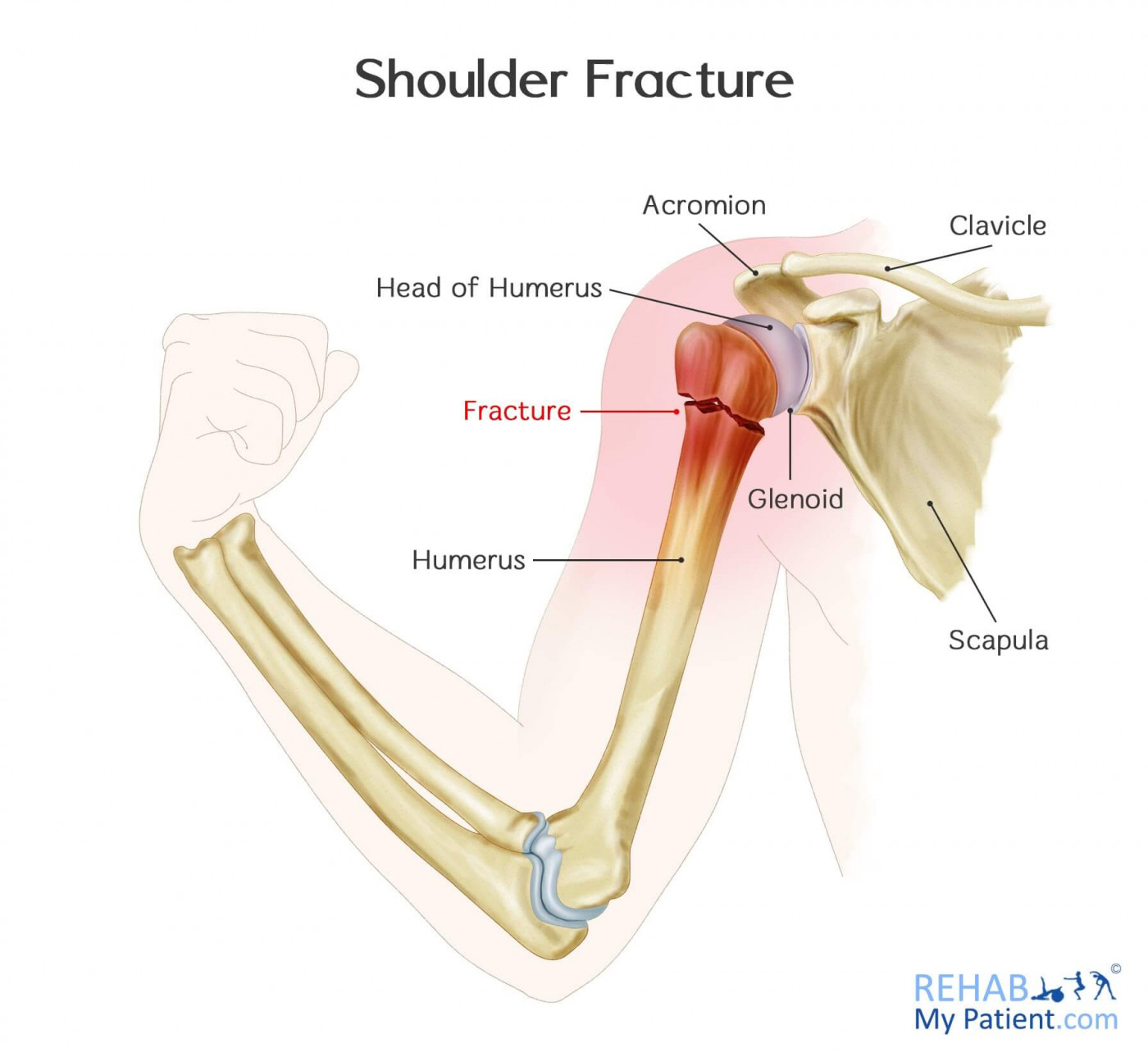
Traumas to the shoulder are quite common. Injuries can range from a separated shoulder that resulted from falling on the shoulder or being involved in a high-speed accident where the scapula becomes fractured. One thing remains certain, shoulder injuries are common but fortunately a fracture to the shoulder is far less common.
Shoulder Fracture Anatomy
Several bones around the shoulder can become fractured. The most commonly fractured bone is the collar bone (see the advice sheet on clavicle fractures). The humerus (arm bone) can also be fractured, and this can be the shaft of the humerus or the through the neck/head of the humerus (sometimes known as a proximal humeral fracture). The latter can cause significant complications with the mechanics of the shoulder. Initially frozen shoulder can occur due to the fracture at the head and neck junction (or through the humeral head). However, the position of the joint can change and this can cause issues with the mobility of the joint. It is not uncommon to find mobility limited to 90 degrees after a fracture to the humeral head.
A rarely fractured bone is the shoulder blade, or scapula. This is from trauma to the shoulder such as a fall from a bicycle or motor cycle, or a heavy impact during sport.

How to Treat a Fractured Shoulder:
- Clavicle Fracture
Most of the time, these particular types of fractures can be treated without having to undergo surgery. Surgery is often necessary whenever there is a compound fracture where the bone has broken through the skin or the bone is nowhere near where it should be. Surgery will often involve fixing the fracture using screws, plates or rods inside of the bone.
- Proximal Humeral Fracture
Depending on the position of the bone, the fracture may or may not be operated. Consultants will typical try not to operate because it’s a tricky place to stabilize with pins and screws, and there are risks that the surgery is unsuccessful. So the majority of these fractures can often be treated without using surgery if the fragments of bone aren’t out of position. If they have shifted from their normal position, surgery is often needed. Surgery will involve fixation of the fractured fragments using plates, pins or screws or you might need the entire shoulder replaced. Several months following a humerus fracture, you may still have difficulty lifting your arm above 90 degrees.
- Scapula Fracture
Most scapula fractures don’t need surgery to repair them. Treatment often involves immobilizing the shoulder with an immobilizer or sling, pain medication and ice. You will also be examined for any additional injuries.
About 10-20 percent of those with this type of fracture will require surgery. Fractures needing surgery often have fragments that involve the shoulder joint or there are additional fractures involving the clavicle. Surgery normally involves fixation or the fractured fragments using screws and plates.
Tips:
- If you are involved in a car accident, you want to have your shoulder examined to make sure nothing was fractured.
- Avoid forcefully twisting the arm outward whenever the arm is higher than shoulder level.
- Seizures can cause you to suffer with a fractured shoulder from the muscles contracting and forcefully tightening.
- Refrain from lifting any objects that are too heavy, especially when trying to do it alone.
- Try to avoid falling on the shoulder to prevent any injuries from occurring.
- Rehab is a priority. It will prevent stiffness, reduce swelling, and improve strength to the shoulder. Rehab will speed up your recovery and prevent further problems down the line. Make sure you see a physiotherapist, osteopath or chiropractor to discuss rehab options.
Sign Up
Sign up for your free trial now!
Get started with Rehab My Patient today and revolutionize your exercise prescription process for effective rehabilitation.
Start Your 14-Day Free Trial